Once you start growing herbs for your health, you will be growing more and more wondering why you waited so long.
Just about every dish tastes better with fresh herbs and there’s no better way to get fresh herbs than to grow them yourself. They are the quintessential easy to grow plant.
They can be grown in a flower bed, a vegetable patch or a pot. Many of them can be started from seed, and do not need a lot of care to thrive.
Do not be afraid, you will be pleasantly surprised with just a little maintenance you will have a herb plant that is thriving and you will take great pleasure in taking your scissors to your little plant to chop the herb that you grew yourself to cook in the food you serve your family.
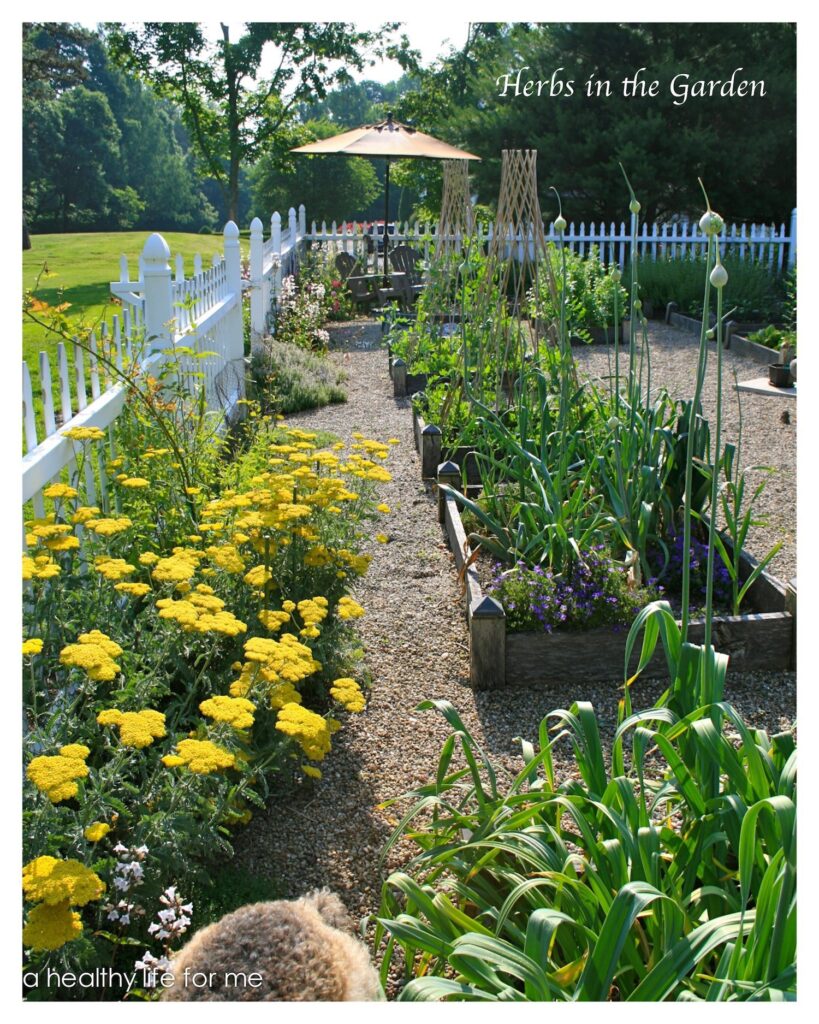
You will have taken your first step in growing your own food for your family. Where ever you plan to plant, make sure that you have good soil.
What does that mean?
- If you are starting seeds or small plants in a pot, fill your pot with potting soil.
- If you are starting in a flower bed where you already have established plants most likely your soil is nutrient rich enough to sustain your plants so your little herb seeds will find success as well.
- If you are starting a new patch, make sure you add top soil and a compost mix. Mix the top soil and compost together to make a good foundation for your plants to grow.
You will need plenty of sunshine for your herbs to grow. Full sun is best for all almost all standard herbs, but read the back of your seed packet or plant label to double-check. Directions for watering and general care will be there as well.
I find that chives are one of the easiest herbs to grow, more like the hardest to kill.
Chives
Chives are hardy plants and in the spring offer a beautiful pink flower that is also edible and can be added to salads for a burst of color.
You can read my post Oh the beautiful chives to learn more about how to grow these plants.
I highly recommend starting these from plants. If you have a friend who is a gardener… oh say “me” ask them if they would give you a few plants. I assure you if they have them, they will share. Chives easily reseed themselves and pop up where ever they please.
Why you want to add chives to your diet: the leaves are packed with B-complex vitamins as well as some essential minerals such as copper, iron, manganese, zinc, and calcium. The leafy greens contain several vital vitamins such as pyridoxine, pantothenic acid, niacin, riboflavin, and thiamin in healthy proportions.
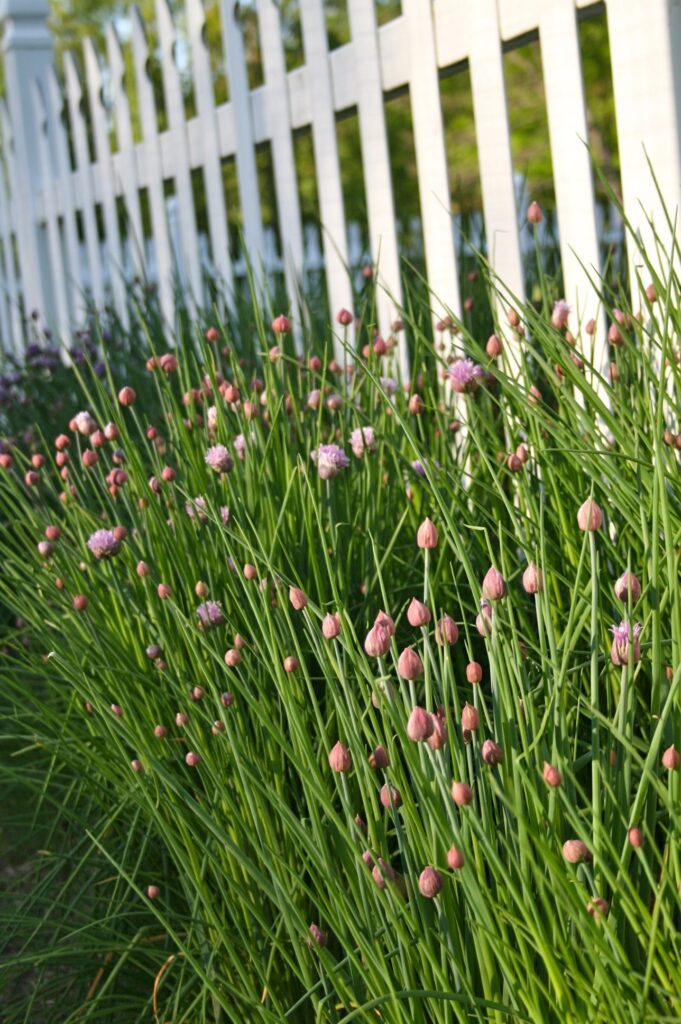
Parsley
Parsley for me has been a champ in the garden, I always start from seed and enjoy this herb through the summer, lifting several plants to pot up and bring into the house to use during the winter.
I am currently still cutting from a plant from last summer.
Parsley is also one of my favorite herbs to cook with because you can add chopped leaves to almost all dishes and it is a powerhouse of healthy benefits. One of the most important to me being that it is rich with an antioxidant arsenal that includes luteolin, a flavonoid that searches out and eradicates free radicals in the body that cause oxidative stress in cells.
Basil
Basil is an easy herb to grow from seed as well.
Basil must be pinched once it starts to grow. It easily goes to seed, which means flower heads will form at the top of the plant, which bees love, but diminishes the flavor of the herb.
Basil is so easy to grow you will be handing out bunches to people when you shake their hands. Basil is rich in carotenoids such as beta-carotene, which can be converted into vitamin A.
Beta-carotene is an even more potent antioxidant than regular vitamin A, as it not only protects cells from free radical damage, but also aids in keeping free radicals from oxidizing cholesterol in the bloodstream.
Cilantro
Cilantro is another easy herb to grow from seed.
It usually is the first one up and growing, which is nice when you are anxious to see progress, but it is also the first one to go to seed.
I usually end up planting an additional bag of seeds by first of June and end up pulling out the plants that are fighting to go to seed.
Cilantro is an amazing herb for your health not only for the vitamins and minerals it adds to your diet but because it has the ability as a powerful, natural cleansing agent. The chemical compounds in cilantro bind to toxic metals and loosen them from the tissue.
Oregano, Thyme, Sage and Rosemary
Oregano, Thyme, Sage and Rosemary are herbs that I start from plants that I pick up at the nursery.
Make sure you plant these where you want to see them, because they will return additional years.
My Rosemary is going on year three, Oregano year five, Thyme year eight and Sage usually only lasts two seasons.
These herbs also fit in well to informal flower beds. Oregano, Thyme and Sage have beautiful flowers, that again bring the bees to your garden and can be added to your dishes.

Oregano
Oregano is high minerals like potassium, calcium, manganese, iron, and magnesium.
Potassium is an important component of cell and body fluids that helps control heart rate and blood pressure caused by high sodium. It’s one of the healthiest and tastiest herbs you can try.
The list of health benefits from this herb is extensive. It also looks great as filler in your perennial beds.
Thyme
Thyme is another powerhouse of vitamins and minerals. Its leaves are one of the richest sources of potassium, iron, calcium, manganese, magnesium, and selenium. Thyme is great to grow in the front part of your flower beds. Growing 6-8″ tall. Check out my post Thyme is a Herb that cures all diseases on more about how wonderful this herb is for your health.
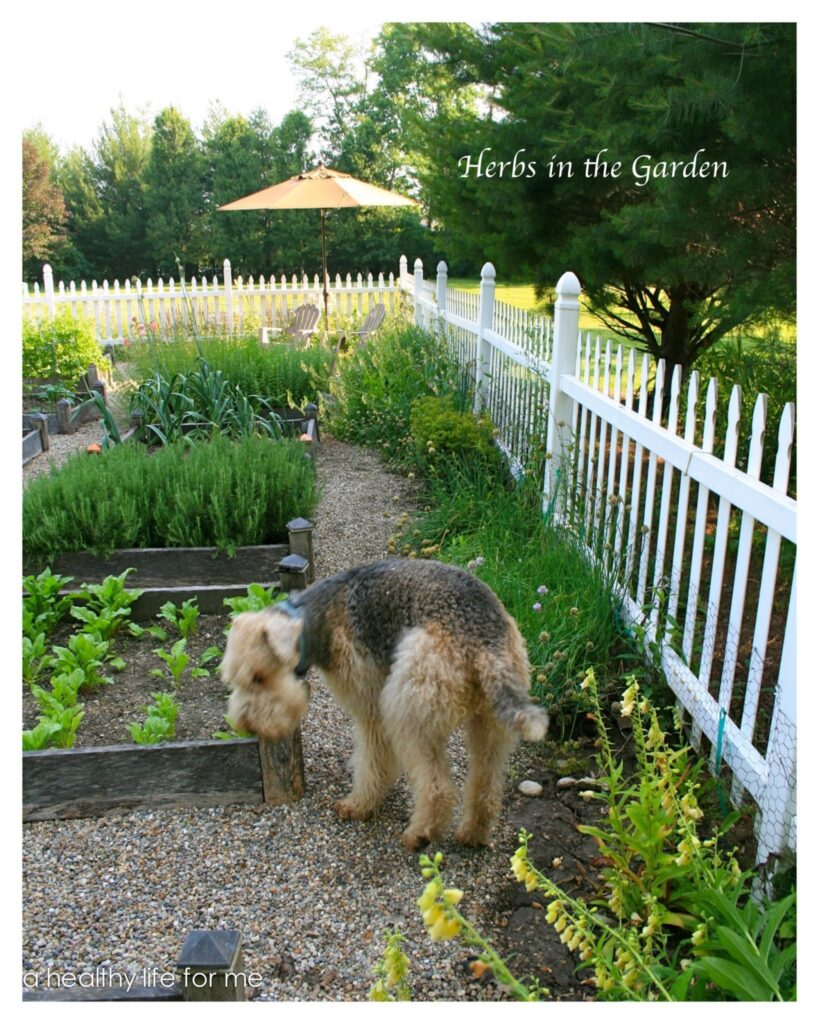
Sage
Sage is one of those herbs that has far greater concentrations of antioxidants than any common fruit or vegetable source. It is great with cheeses over the summer or on top of your salad.
Rosemary
Rosemary, Rosemary, Rosemary.
If you follow this blog you know I love my Rosemary. I swear it is the herb that keeps on giving. You can do so much with a single Rosemary plant throughout the year.
Even with the long, harsh winter we had here locally, my Rosemary plants made it through. They need a bit of a trim, but they will still be providing me throughout the upcoming year.
Not only does this plant offer me endless ways to use it in crafts; check out How to Make a Rosemary Wreath and How to Make a Herb Swag, I use it in the chicken coop as a deodorizer, hanging bundles from the interior.
However, **MOST** importantly the Rosemary plant contains carnosol which has been found in studies to be a potent anti-cancer compound.
Researchers have had promising results in studies of its efficacy against breast cancer, prostate cancer, colon cancer, leukemia, and skin cancer. In one study, researchers gave powdered rosemary too rats for two weeks and found that it reduced the binding of the carcinogen given to the rats by 76% and significantly inhibited the formation of breast tumors.

Have I sold you on all the reasons you want to try to grow your own herbs?
I promise you if you grow your own herbs even if you can only grow a pot on your patio, they will give you so much pleasure not only from the beauty that they provide but also the health benefits that they can supply your family.
I am such an addict of growing my own herbs that many different varieties line the perimeter of my Kitchen Garden as well as several raised beds. So don’t hesitate to ask me a question, as you can see below I would love to talk Herbs with you!






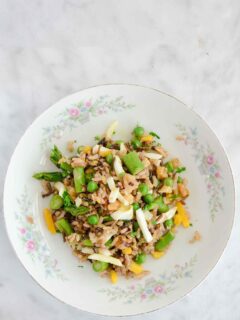

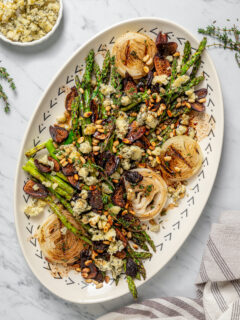
Great post! I’ll definitely try out some more herbs this year. I’ve got some Rosemary in a pot from last year. If I cut it back, do you think it’ll rejuvenate and give it new life?
Diana,
If your plant still has green healthy growth on it at the base, I would trim the top, but do not take more than 1/3 of the plant, less is more. Try to cut just above a leaf joint if you can. Then just give it a chance to rejuvenate as the weather picks up. My rosemary plants have a mix of green and brown, with the harsh winter we had, I may have lost a few plants. I plan on waiting until mid may till I trim and remove any. Then it will be a trip to the nursery to replace any I lost. Hope this helps.
xo Amy
A reader asked about nibbling creatures and if there was certain places where herbs should not be planted. Here was my response.
The only herbs that I know that are Deer resistant and I say that loosely, because they will still nibble if they want, are Rosemary, Sage, Chives and Parsley. As far as bunnies go, I have to say I haven’t noticed them munching on any, but I am sure they would eat any. If you have a problem with bunnies in an area I wouldn’t plant herbs there.
Do not plant your herbs next to any poisonous perennials, here are a few that I have growing here Foxglove, Hydrangea, Lily of the Valley, Rhododendron and Wisteria.
One that I like to pop in with my perennials is Oregano, it has a sweet little flower head that pops up and the bees love it.
Good luck, hopefully it will warm up again and we can get out there and get too it.
xo
Amy
P.S: Deer Scram works well at keeping all munchers away from plants, though its expensive..
Pretty garden! I want to add some herbs to my urban, roof deck garden this year. This post is totally gonna help me out. Thank you!
Nice post, I start all my own Herbs from seed in my greenhouse.
Lovely gardens.